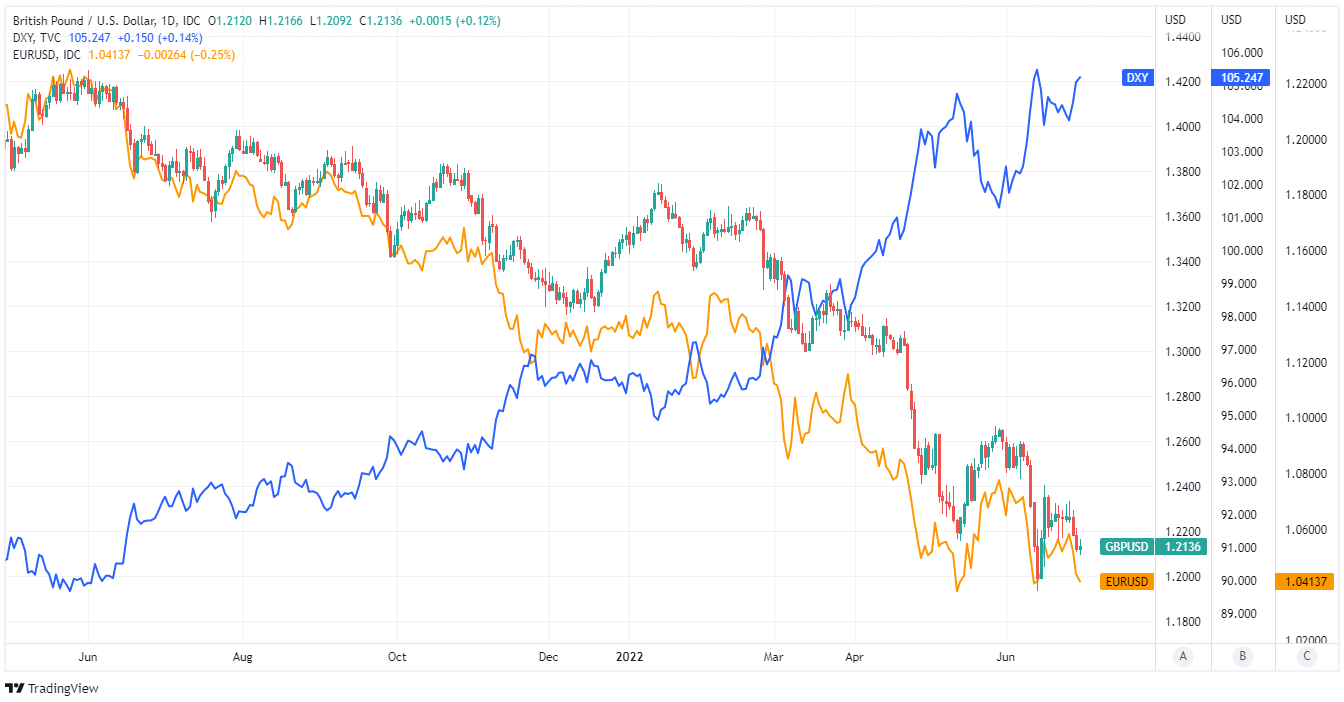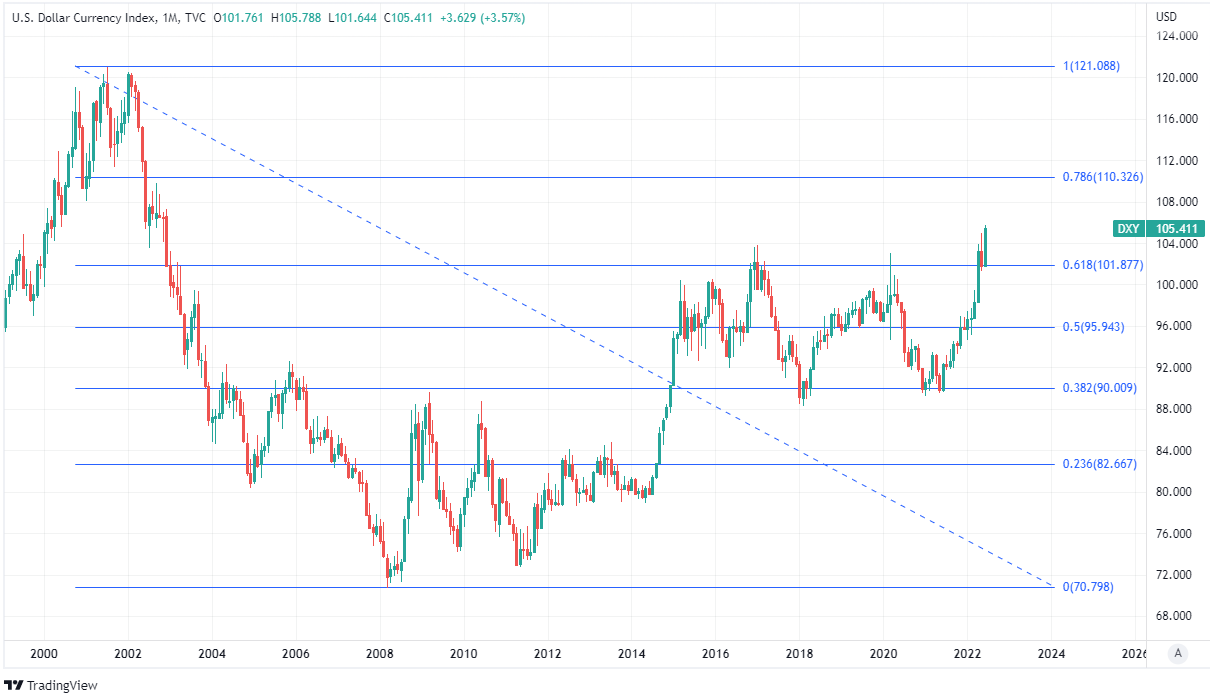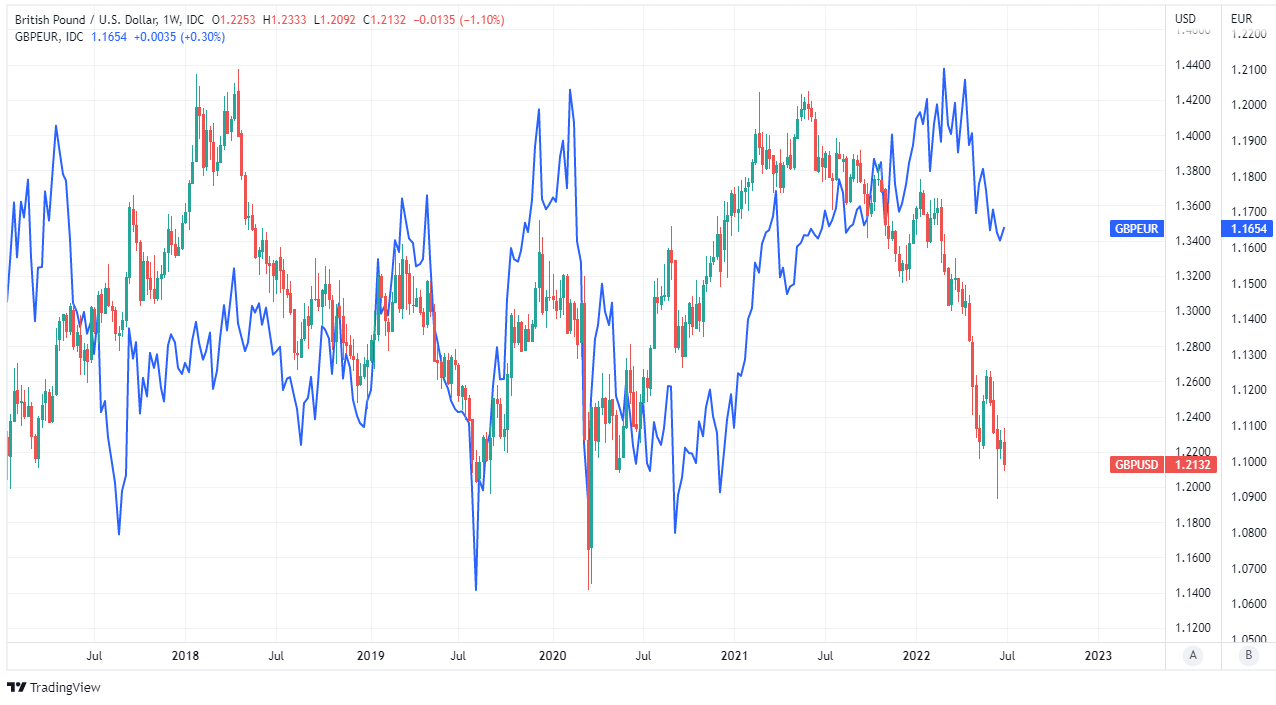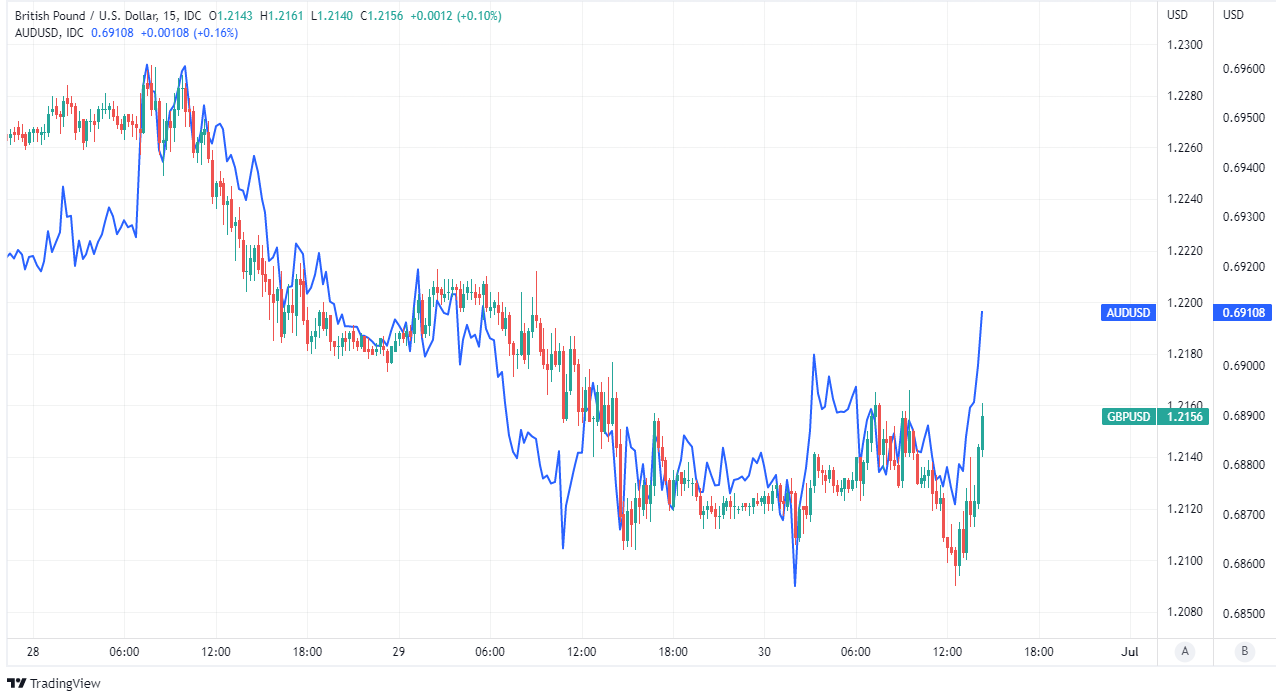Stalling U.S. PCE Inflation Helps the Pound Recover against the Dollar
- Written by: James Skinner
-

Image © Adobe Images
Pound Sterling recovered lost ground from a retreating Dollar in the penultimate session of the week but the latest from the Federal Reserve (Fed) and Bank of England (BoE) suggests the outlook is hinged on the future direction of U.S. inflation and the UK’s currently faltering economy.
Sterling and other currencies staged a sharp rebound against the Dollar after the Fed's preferred measure of U.S. inflation surprised on the downside of market expectations for the month of May on Thursday.
The Core Personal Consumption Expenditures price index stalled at 0.3% in month-on-month terms back in May, leading the annual rate of Core PCE inflation to fall from 4.9% to 4.7%, although this was after energy and food costs were excluded from the basket under the microscope.
"Energy prices increased 35.8 percent while food prices increased 11.0 percent," the Bureau of Economic Analysis said.
Food and energy costs did continue to rise in May, however, and enough to keep the main PCE inflation rate at 6.3% in annual terms.
Above: Pound to Dollar rate shown at 15-minute intervals and featured alongside AUD/USD.
With households heavily impacted by food and energy costs, changes in prices of food and energy matter almost as much to the Fed currently as any other prices do, and in large part because they can lift expectations for inflation with implications for wages and other prices further down the line.
Hence why Thursday's ebb in Core PCE inflation may not be enough to restrain the Federal Reserve when it comes to interest rates.
"We all study inflation expectations very carefully and if you look across the broad scope of short, medium and long-term inflation expectations you’d still say that we have credibility. That they’re well anchored. But there’s a clock running here," Fed Chairman Jerome Powell said on Wednesday this week.
LIVE: the policy panel at the #ECBForum on Central Banking https://t.co/ZFHX2hjlcD
— European Central Bank (@ecb) June 29, 2022
Thursday's data came after the European Central Bank Forum on Central Banking wrapped up with a panel discussion featuring heads of the BoE, Fed, ECB and Bank for International Settlements in which much insight was offered into the outlooks for interest rate policies of all three.
Most notably for the currency market, Fed Chairman Powell was the only participant to give an unequivocal and almost unqualified endorsement to current market expectations when the three central bank heads were asked about market assumptions for interest rates.
 Above: Pound to Dollar rate shown at daily intervals with U.S. Dollar Index and EUR/USD.
Above: Pound to Dollar rate shown at daily intervals with U.S. Dollar Index and EUR/USD.
“My colleagues and I wrote down numbers for the end of this year for our policy rate between 3% and 3.5% - and markets are broadly right in that space somewhere and then for next year, between 3.5% and 4%,” he said when asked how well markets are responding to the Fed's guidance.
Fed rate setters revised up forecasts for inflation in June while Chairman Powell warned in the press conference that Federal Open Market Committee (FOMC) colleagues generally agree that interest rates will need to reach a “modestly restrictive level at the end of this year,” in order to bring it down.
Chairman Powell also warned back then that the Fed could move faster than was suggested as likely in June if fellow rate setters do not see in the interim some “compelling evidence that inflation is moving down, consistent with inflation returning to 2 percent.”
"Is there a risk that we will go too far? Certainly there’s a risk but I wouldn’t agree that’s the biggest risk to the economy. The bigger mistake to make, let’s put it that way, would be to fail to restore price stability," he said on Wednesday.
 Above: U.S. Dollar Index shown at monthly intervals with Fibonacci retracements of 2002 downtrend indicating long-term technical resistances.
Above: U.S. Dollar Index shown at monthly intervals with Fibonacci retracements of 2002 downtrend indicating long-term technical resistances.
BoE Governor Andrew Bailey was a bit more circumspect and cautious about endorsing assumptions relating to Bank Rate, however, and also offered a prognosis for the relative underperformance of Pound Sterling during 2022.
“I’m not surprised by the path of Sterling and for the reason that I said earlier, because I think the UK economy is probably weakening somewhat earlier and more than others. I think that’s been somewhat evident now for a few months and of course it is over the last few months it’s happened but in our system we do not attribute good or bad to movements in the exchange rate,” the governor said in response to a question from Bloomberg’s Francine Lacqua.
On the outlook for Bank Rate the governor reiterated that the BoE is most concerned with the risk of commodity price increases leading wages, and so also other prices in the economy, to rise faster than they normally would because this would threaten to sustain inflation above the BoE’s 2% target.
“The message that we gave and was in the language of our last meeting, as you rightly said was, that if we see greater persistence in second round effects [wages and other price increases] then we will act more forcefully and we will have to act more forcefully,” the governor said in one part.
 Above: Pound to Dollar rate shown at weekly intervals with Pound to Euro rate.
Above: Pound to Dollar rate shown at weekly intervals with Pound to Euro rate.
“Now I’m not going to say what will happen at the next meeting because our next meeting is still more than a month away and a lot will happen between now and then. What I would say to you is that, of course, this leaves options on the table and that’s very deliberate. Very deliberate. I mean people can take a message away from that,” he also later added.
Bank Rate was lifted to a post-financial crisis high of 1.25% in June and some measures of market expectations suggest that investors expect it to rise further and so that it reaches almost three percent by year-end.
But Governor Bailey’s remarks made clear that UK economic data and what it says about the risk of “second round effects,” such as higher wages and energy-related increases in prices of other products, will be the most important determinant of BoE rate decisions in the months ahead.
“It’s quite clear that as we respond to this [real income] shock, we want to have those options on the table for precisely the reason that Augustin just said. There will be circumstances in which we will have to do more. We’re not there yet in terms of the next meeting. We’re still a month away but that is on the table, but you shouldn’t assume it’s the only thing that’s on the table,” he cautioned.






